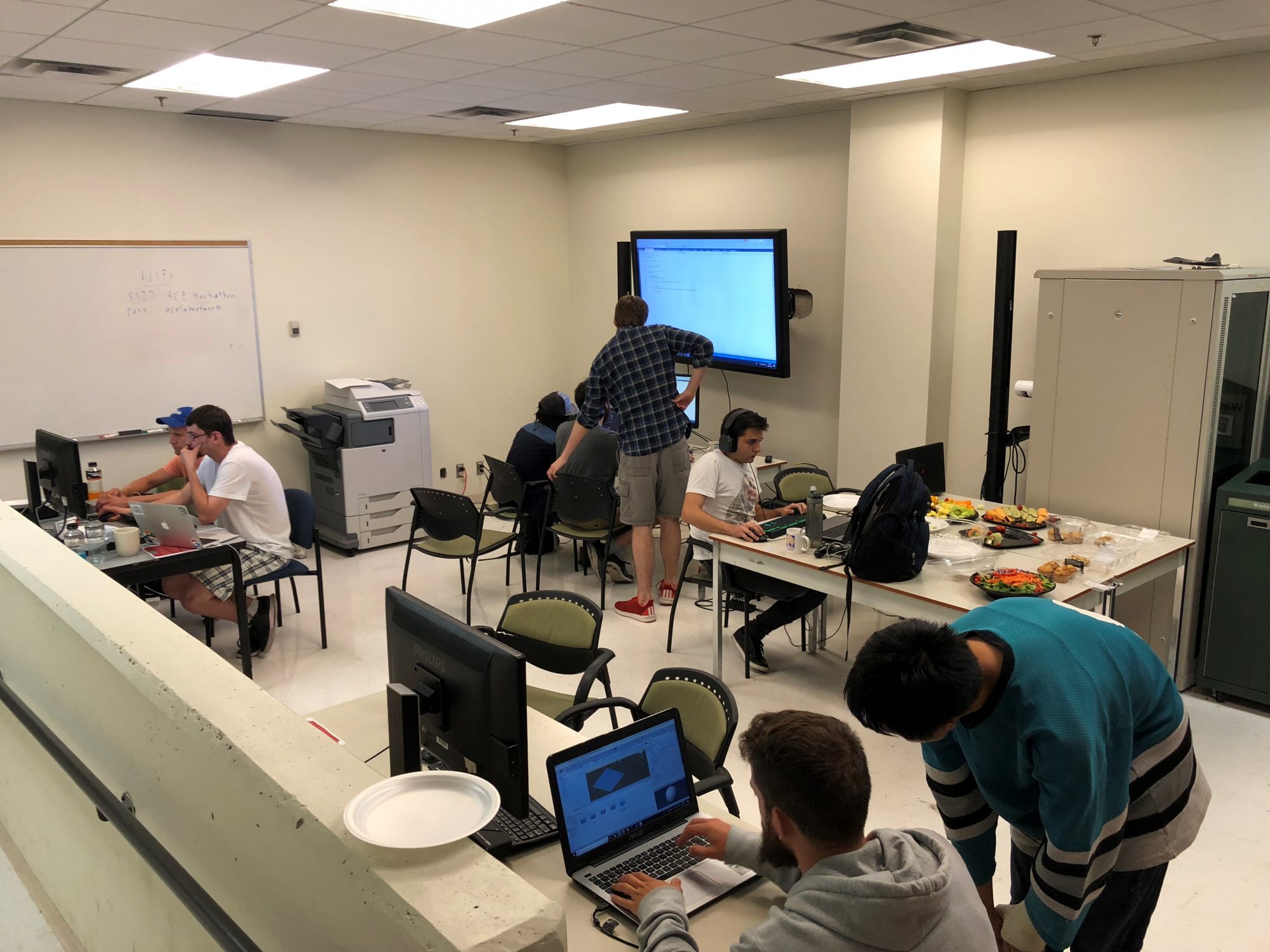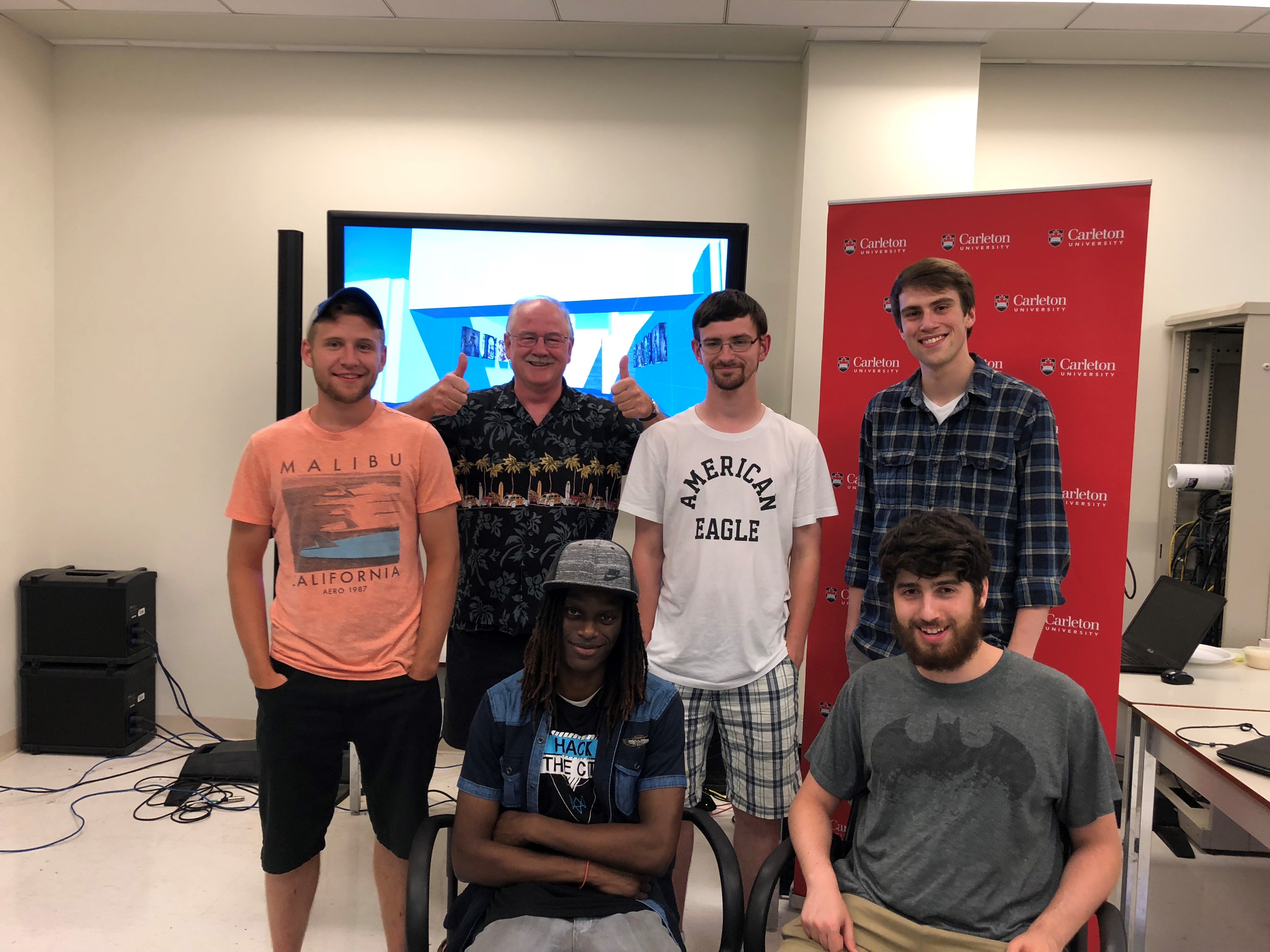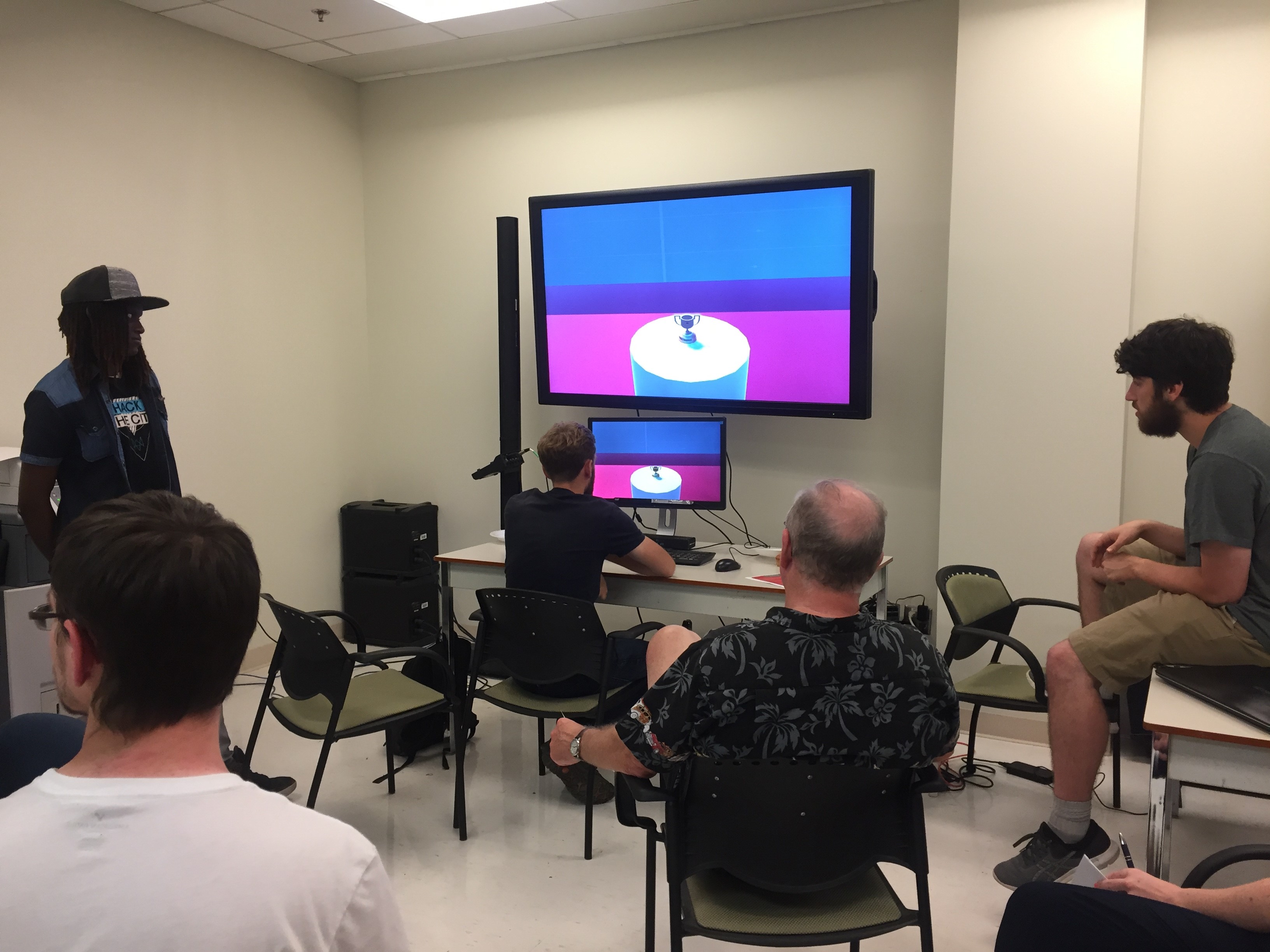 On July 29th, Carleton’s Advanced Cognitive Engineering (ACE) Lab hosted a hackathon that brought together people from different academic backgrounds to test eye-tracking devices to make technologies and gaming more accessible for people with motor disabilities. Three graduate students helped to plan and organize the event. Cognitive Science student Kayla Pedret also helped organize the event and wrote the following blog about the day.
On July 29th, Carleton’s Advanced Cognitive Engineering (ACE) Lab hosted a hackathon that brought together people from different academic backgrounds to test eye-tracking devices to make technologies and gaming more accessible for people with motor disabilities. Three graduate students helped to plan and organize the event. Cognitive Science student Kayla Pedret also helped organize the event and wrote the following blog about the day.
On a Sunday morning last month, you would have been able to find dedicated teams of programmers and game developers working together in the Visualization and Simulation (VSIM) building on campus. By the end of day after 10+ hours of hard work, the teams had created some impressive escape-room-style computer games. Beyond the intricate puzzles and art development, the critical part of these games was that they could be played with minimal keyboard or mouse interaction, being guided mainly by the player’s eyes by way of a small bar attached to the bottom of the computer monitor that tracked the player’s head and eye movements.

Progress in the gaming and tech industries is advancing at faster and faster rates, often resulting in impressive pieces of technology that can be used in ways that had been unimaginable in decades past. Advanced simulators, virtual and augmented reality, and eye-tracking technologies are only some of these advances being taken advantage of in research in centers such as Carleton’s Advanced Cognitive Engineering (ACE) Lab and the IMPACT Lab at the University of Regina, who have been working on a collaborative effort to harness technological progress for art creation that is accessible to individuals with motor disabilities. Teams from both labs have been working on a project that seeks to take a step in developing accessible means of creative production, and to create tangible outputs which use commercially-available eye-tracking technologies – those same small bars attached to the computer monitors. Bringing together scholars from Cognitive Science, English, Critical Disability Studies, and the Digital Humanities, “Eye Tracking, Disability, and Mind Art Creation: A Multidisciplinary Approach” is a step in the direction of a more accessible future wherein people with motor disabilities are able to create and use art projects in a digital space with ease.
Both the IMPACT Lab and the ACE Lab were able to use the same eye-trackers, the Tobii 4C Eye-Tracker for the project, while holding Hackathons with different structures. The University of Regina’s Hackathon was centered on creating mind art with the eye-tracker, almost as if the user’s eye motions were the paint brush on a digital canvas. Carleton’s Hackathon, however, was focused on developing games that could be played using the eye-tracker in lieu of most mouse and keyboard actions. Results from both events suggest that this is a viable path for future endeavors in expanding the accessibility of the digital realm.

Teams walked away with prizes generously provided by Escape Manor and Cineplex Lansdowne, as well as a heightened interest in future development opportunities. Looking forward, the ACE Lab team is interested in expanding this kind of exploratory work to virtual reality to see how far current technologies can be pushed to make the digital world more accessible.
To learn more about research being done by the ACE Lab, visit https://carleton.ca/ace/, or you can keep up with the lab on Twitter @CU_ACELab.

Wednesday, August 8, 2018 in Grad Student blogs, Grad Student Research, News
Share: Twitter, Facebook




